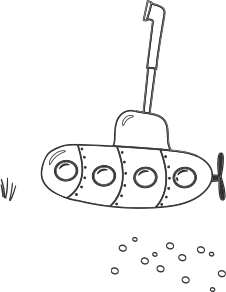Winter Wonderland: Tips for Preschool Parents During...
Winter brings sparkling snowflakes, cozy sweaters, and plenty of excitement for young children. These practical tips will help you and your little one enjoy the season safely, comfortably, and joyfully.1. Keep Little Bodies Warm (But Not Overheated!)Preschoolers are active and love outdoor play, even when the temperatures drop. To keep them safe:Dress them in layers — a base layer, a warm middle layer, and a waterproof outer layer.Don’t forget hats, gloves, and waterproof boots.Check clothing labels to make sure items are warm and breathable.Keep a spare set of clothes in your child’s bag in case they get wet while playing.2. Boost Immunity With Healthy HabitsWinter is peak season for colds and flu. A few simple habits help keep little immune systems strong:Encourage handwashing before eating and after playing.Offer a variety of fruits and vegetables for vitamins and minerals.Make sure your child gets plenty of rest, as sleep is one of the best immune boosters.3. Safe and Fun Winter PlayOutdoor time is still important in winter! Fresh air helps children burn energy and supports emotional well-being.Outdoor ideasBuilding a mini snowman“Ice painting” using colored water in spray bottlesCollecting winter nature treasures like pinecones and branchesIndoor ideasSensory bins with cotton balls (“snow”), scoops, and cupsWinter-themed arts and craftsStorytime with cozy blankets4. Watch for Signs of “Winter Wiggles”Preschoolers can get restless when they’re indoors more often. To help:Plan short movement breaks at home — jumping jacks, dancing, or obstacle courses.Use indoor-friendly toys like tunnels, soft blocks, or balance stepping stones.Encourage imaginative play with winter themes (penguins, polar explorers, snowy forest animals).5. Establish Cozy Winter RoutinesWith longer nights and cooler days, winter is a good time to create calming routines:Enjoy a nightly storytime tradition.Start a weekly “winter craft afternoon”.Use warm baths and soft lighting to create a relaxing end-of-day routine.These habits help children feel secure and reduce stress as schedules shift.6. Keep Communication StrongPreschoolers may struggle with changes in routine, darkness, or cold weather. Talk with your child:Ask how their day felt — was it chilly? fun? tiring?Use simple language to explain why winter requires different clothing or earlier bedtimes.Stay in touch with your child’s preschool about weather-related policies and outdoor play guidelines.7. Embrace the Magic of the SeasonWinter can be full of joyful moments your child will remember:Hot cocoa after outdoor playWatching snow fallCreating holiday craftsFamily walks bundled up in scarves and hatsEven the simplest activities can feel magical through a preschooler’s eyes.Winter is a wonderful opportunity to slow down, snuggle up, and explore seasonal learning together. With a little preparation and plenty of warmth—both literal and emotional—your preschooler can enjoy every moment of this chilly season.
VIEW MORE





































